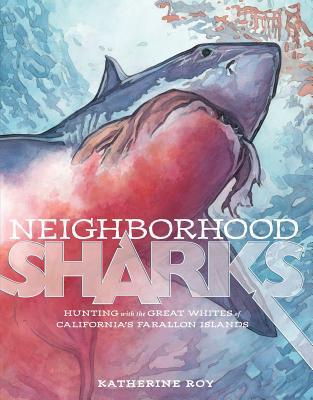 Neighborhood Sharks: Hunting with the Great Whites of California’s Farallon Islands, written and illustrated by Katherine Roy, was a nominee for the 2016-17 South Carolina Children’s Book Award.
Neighborhood Sharks: Hunting with the Great Whites of California’s Farallon Islands, written and illustrated by Katherine Roy, was a nominee for the 2016-17 South Carolina Children’s Book Award.
Neighborhood Sharks is a perfect fit for young (and not-so-young) shark enthusiasts. This book tells readers about the great white sharks that hunt just thirty miles from San Francisco.
Each fall, great whites circle the Farallon Islands, an area off-limits to all humans except the scientists who study these massive predators, and search for energy-rich elephant seals. The shark’s biology makes it uniquely suited to prey on these seals and continue the food chain that is so important to the ocean’s ecosystem.
Author/illustrator Katherine Roy depicts the sharks’ feeding cycle and biology in vivid, stunning paintings that make readers want to know more. Sources and suggestions for further reading at the end of the book provide readers with options to do just that.
Neighborhood Sharks is a great addition to studies of animals, the food chain, and the impact animals can have on the ecosystem. This book definitely has a place in school libraries, public libraries, and classrooms.








